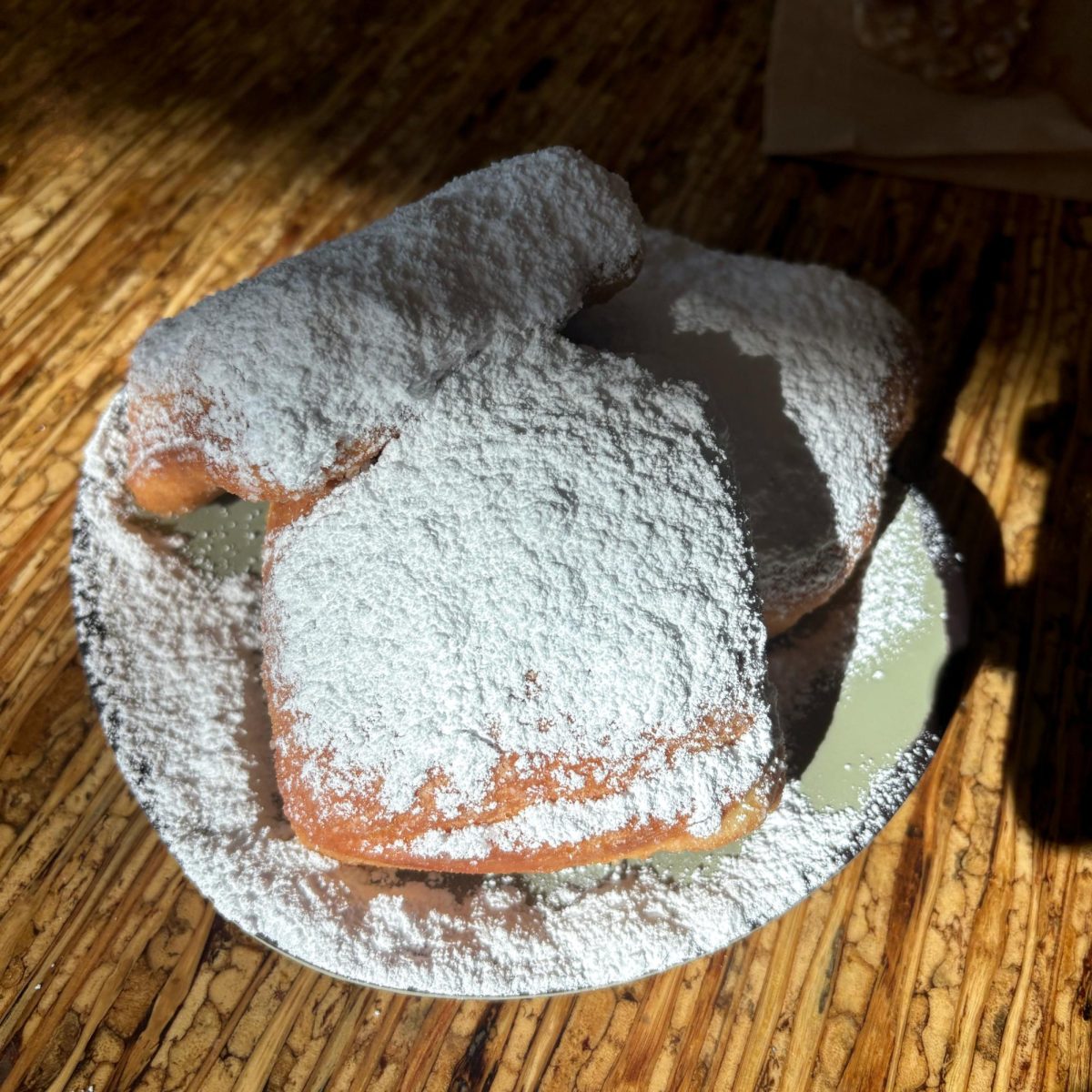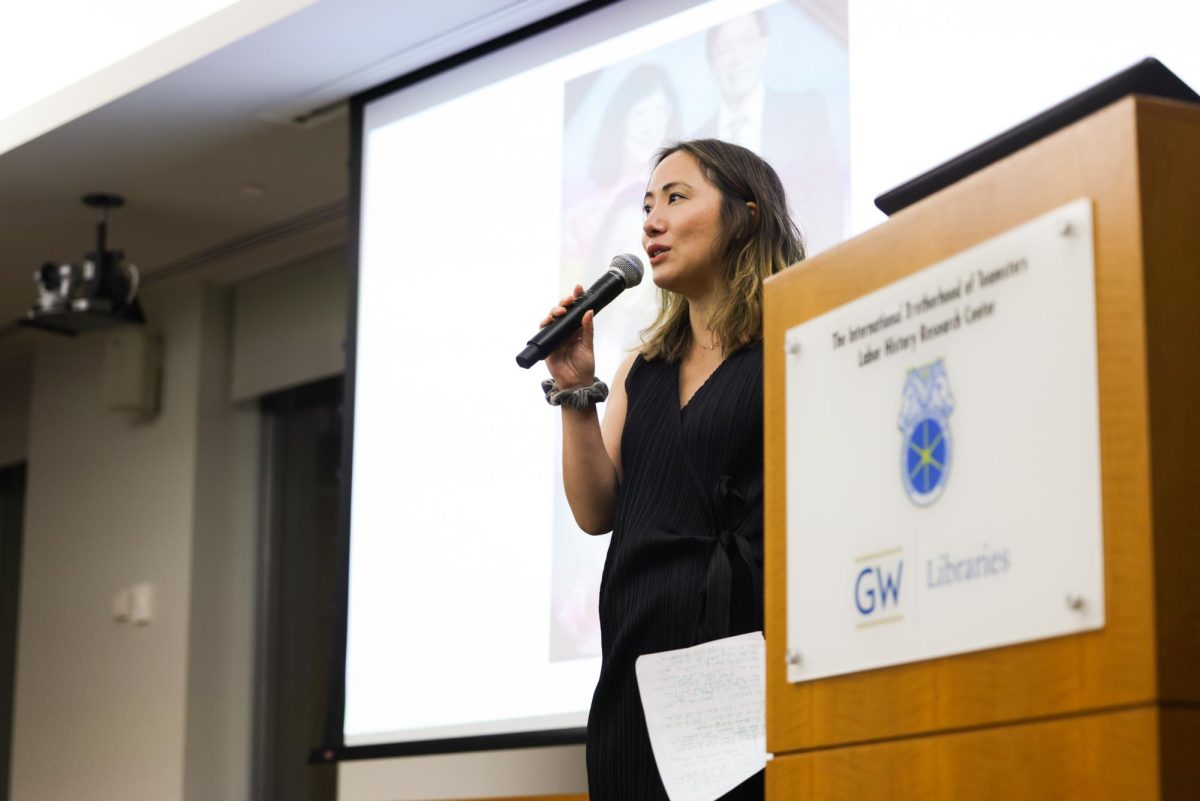Director Ava Taylor thought her last show of the year was a comedic murder-mystery, similar to the game, Clue, but she soon discovered the play’s plot was much more dimensional than the classic board game.
Instead, the junior found directing “The Musical Comedy Murders of 1940” – a mystery featuring a group of 10 people stuck inside a mansion in Chappaqua, N.Y. in December 1940 – to be more historically enriching.

“Not only is it a fun ‘whodunit’ kind of show, it also delves into the issues of the time, like World War II and the real threat of the Nazis,” Taylor said. “Under all of the comedy of the show, there is a great snapshot of the 1940s on stage.”
The mansion owner, Elsa Von Grossenknueten, lives with her maid Helsa Wenzel.
Wenzel is killed by a masked murderer, an act to which Von Grossenknueten is oblivious. Von Grossenknueten heads to bed and wakes up the next day to prepare for the arrival of dinner party guests.
The guests are all former actors or crew members from a play in which three women were murdered, foreshadowing the next turning point of the show, as an invited guest turns up and is also murdered at the same time the maid’s cold corpse is discovered. Guests uncover truths about their fellow witnesses and everyone involved is a potential suspect.

In the second act, guests roam through secret tunnels in the mansion, trying to uncover the location of the unknown murderer. Each guest is unaware of one other’s presence, comically bumping in to each other in the dark.
“There is a lot of people not noticing things that are going on that they should notice,” Aly Seeberger a senior who plays the maid, said.
While comparisons are obvious between the guess-who board game, Clue, and the play, Taylor says she and the cast underestimated the show’s complex intricacies that keep the audience guessing.
Each character has a unique personal reaction to the discovery of a diary, a cryptic collection from Bebe, a showgirl who was murdered in the guest’s previous play.
Some guests try and decode the message hidden in the book while others blatantly ignore it.
To produce a murder-mystery that is humorous and intriguing, the cast and crew embraced the 70-year-old costumes and vernacular. Each cast member came up with his or her own way to brush up on the World War II-era history.
Tori Kontor, a freshman who plays Broadway producer Marjorie Baverstock, said she looked up images of cultural figures and fashion from the Greatest Generation. Freshman Greg Langstine said he watched other productions from the 1940s in order to get the snappy comedic timing right.
“Because this is such a character show, you have to over exaggerate it and just like in the 1940s, a lot of shows back then are very quick and snappy which builds in the humor,” Langstine.
Taylor’s technique for evoking yesteryear hit closer to home. She said she talked over cultural cues with her grandparents, who lived through the time period, becoming her best resource.
Advice from her grandmother helped shape wardrobe choices. Taylor’s grandmother told her “If men weren’t wearing suits, they were under-dressed and if the ladies weren’t wearing skirts below the knee it was considered scandalous.”
Junior Ed Churchill, who plays alleged Irish tenor Patrick O’Reilly, employs three different dialects in the production. He spent hours listening to recordings from the time period to perfect his pitch.
“The Musical Comedy Murders of 1940” runs Thursday at 8 p.m. and Friday and Saturday at 7 and 10 p.m. at the Blackbox Theater in West Hall.
This post was updated on April 20, 2012 to reflect the following:
The Hatchet incorrectly reported the time for “The Musical Comedy Murders of 1940.” The correct times for the play are Thursday at 8 p.m. and Friday and Saturday at 7 and 10 p.m.





